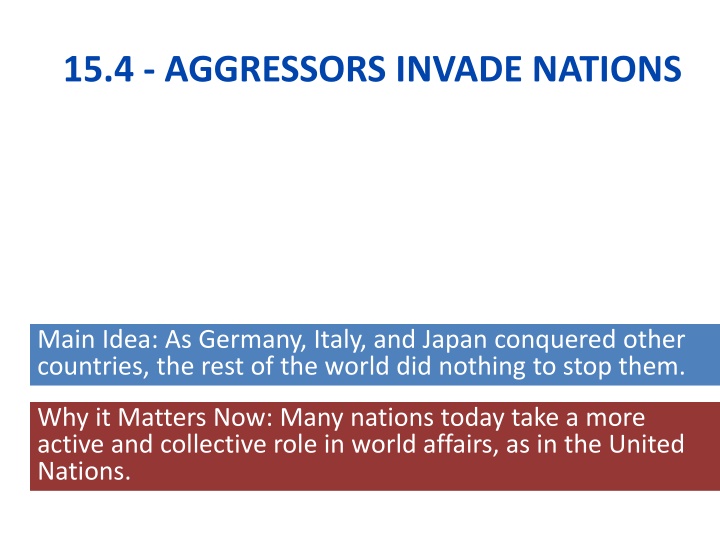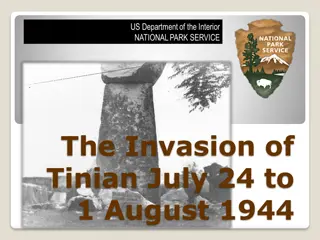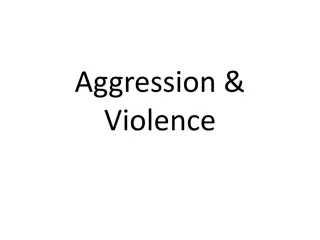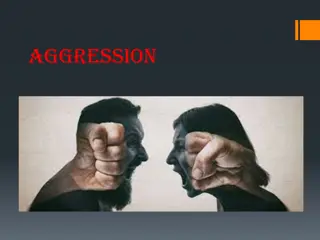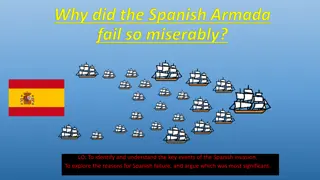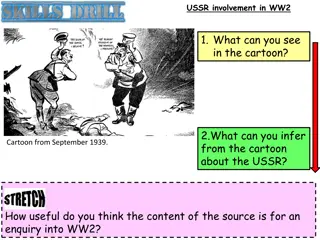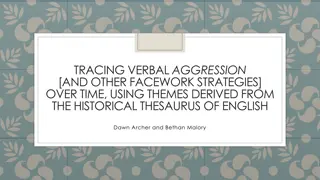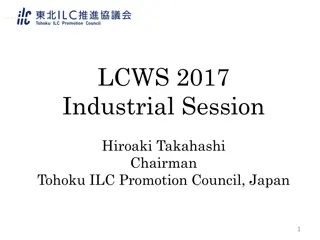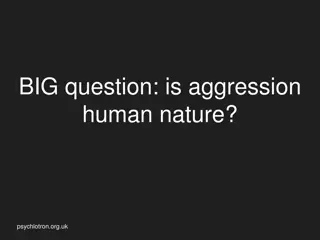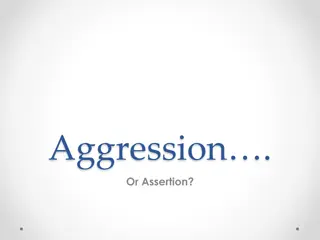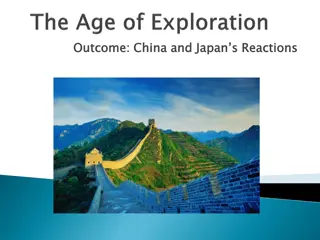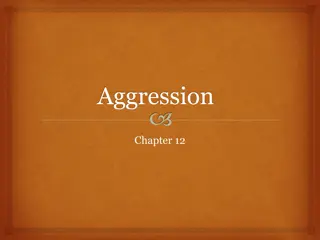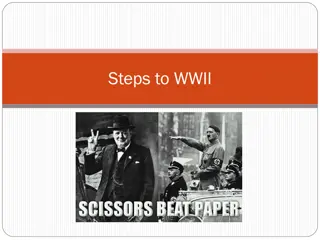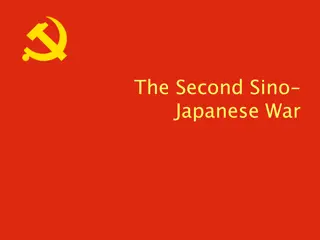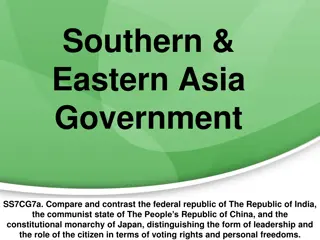Japan's Aggression in China: The Atrocities of Invasion
Japan's aggressive expansion in the 1930s led to the invasion of China, marked by incidents like the seizure of Manchuria and the brutal atrocities in Nanjing. The international community's failure to intervene effectively underscores the importance of collective action in global affairs, a lesson still relevant today as nations navigate complex geopolitical challenges.
Download Presentation

Please find below an Image/Link to download the presentation.
The content on the website is provided AS IS for your information and personal use only. It may not be sold, licensed, or shared on other websites without obtaining consent from the author.If you encounter any issues during the download, it is possible that the publisher has removed the file from their server.
You are allowed to download the files provided on this website for personal or commercial use, subject to the condition that they are used lawfully. All files are the property of their respective owners.
The content on the website is provided AS IS for your information and personal use only. It may not be sold, licensed, or shared on other websites without obtaining consent from the author.
E N D
Presentation Transcript
15.4 - AGGRESSORS INVADE NATIONS Main Idea: As Germany, Italy, and Japan conquered other countries, the rest of the world did nothing to stop them. Why it Matters Now: Many nations today take a more active and collective role in world affairs, as in the United Nations.
Japan 1920 s: Japanese gov t became more democratic Ruled by a prime minister Signed the Kellogg-Briand Pact renouncing war. 1930: Gov t was blamed for Great Depression Military leaders gained support & control Made Emperor Hirohito the symbol of state power Army leaders who ruled in his name
Japan Wanted to solve economic problems by foreign expansion Planned a Pacific empire Included China Gain raw materials & markets for goods Gain land for rising population
Japan Invades China 1931: The Japanese army seized Manchuria China s northeast province Area rich in iron & coal Army set up a puppet gov t. Built mines & factories 1st direct challenge to the League of Nations League condemned act, but had no power to enforce decisions 1933: Japan withdrew from the league
Chinese soldiers march to the front in 1939 Japan Invades China 1937: Border incident started full-scale war between Japan & China. July 7, 1937: Japan & China exchanged shots at a railroad bridge near Beijing Japanese forces swept into northern China Despite having a million soldiers, China s army was no match for the better equipped and trained Japanese Chiang Kai-shek Known in English as Chiang Kai-shek
The Rape of Nanjing December 13, 1937: Japan marched into Nanjing Capital of China Chiang forces had fled to establish a new capital For 6 weeks, chaos consumed the city Japanese lined people up by the hundreds and killed them en masse 300,000 died An estimated 20,000 - 80,000 women were raped; many were disemboweled and left to die. Some soldiers even nailed the women alive to walls.
Forced to retreat, Jiang Jieshi set up a new capital at Chongqing. At the same time, Chinese Communist guerrillas led by Mao Zedong continued to fight in the conquered area.
Mussolini Mussolini wanted a colonial empire in Africa Oct. 1935: Mussolini invaded Ethiopia Ruled by Haile Selassie Was no match for the Italian army. Mussolini May 1936: Mussolini told a cheering crowd that Italy has at last her empire a Fascist empire. Haile Selassie
Mussolini Ethiopia appealed to the League of Nations for help condemned the attack, but did nothing Britain continued to let Italian troops & supplies pass through the British controlled Suez Canal on their way to Ethiopia hoped to keep peace in Europe
Hitler Hitler pledged to undo the Versailles Treaty (WWI) limited the size of Germany s army March 1935: Hitler announced that Germany would not obey the restrictions League issued only a mild condemnation The League s failure to stop Hitler from building up its armed forces only convinced him to take even more greater risks Banners throughout Germany announced, Today Germany! Tomorrow the World!
Hitler March 7, 1936: German troops move into the Rhineland Against the treaty Buffer zone for France French were unwilling to risk war Turning point in march toward war 1. strengthened Hitler s power & prestige 2. balance of power changed in Germany s favor 3. weak response by France & Britain encouraged Hitler to speed up his expansion
Hitler Hitler s growing strength convinced Mussolini to seek an alliance with Germany October 1936, Rome-Berlin Axis Treaty between Hitler and Mussolini Nov: Hitler made an agreement with Japan Germany, Italy, & Japan came to be called the Axis Powers
Hitler Nov 5, 1937: Hitler announces plans to absorb Austria & Czechoslovakia into the Third Reich (German Empire) March 1938: Hitler sends his army into Austria and annexed it direct violation of the Treaty of Versailles prohibited a union between Germany & Austria
Hitler Hitler next turns to Czechoslovakia had developed into a strong democratic country with a strong army & a defense treaty with France. 1938: Hitler demands that the Sudetenland be given to Germany 3 million German-speaking people lived in Sudetenland western border of Czechoslovakia formed the Czechs main defense against Germany Czechs refuse & ask France for help
Hitler Sept. 29, 1938: Munich Conference Germany, France, Britain, & Italy meet Czechs not invited 1. Britain & France agree Hitler could take the Sudetenland 2. Germany would respect Czechs new borders Less than 6 months later: German troops took Czechoslovakia Mussolini takes nearby Albania Hitler demands Poland return former German port Danzig Poles refused & turned to France & Britain for aid
Hitler Britain & France ask the Soviet Union to join them in stopping Hitler s aggression Negotiations proceed slowly France & Britain do not trust the Communist gov Stalin resented having been left out of the Munich Conference Stalin also bargained with Hitler
Hitler Aug. 23, 1939: Hitler & Stalin sign a nonaggression pact publicly commit to never attack one another Hitler promised Stalin territory agree to divide Poland between them agree that the USSR could take over Finland and the Baltic countries (Lithuania, Latvia, and Estonia) Removed the threat of Germany being attacked by the USSR from the east
The non-aggression pact was surprising. Hitler and Stalin were seen as natural enemies. When Hitler talked of taking over new land for Germany, many thought that he meant Russia. Hitler also hated Communism, the form of government in Russia
Spanish Civil War 1931: Spain changes from a monarchy to a republic July 1936: General Francisco Franco led a revolt with army leaders called Nationalists favored a Fascist gov. began a 3-year civil war Hitler & Mussolini sent troops, tanks & airplanes to help Franco s forces Only the Soviet Union sent equipment & advisors to aid the Spanish Republicans 1939: Resistance collapsed & Franco became dictator Francisco Franco
Spanish Civil War Discuss Analyzing Art p.484
Isolationism U.S. followed an isolationist policy political ties to other nations should be avoided argued that entry into WWI was a costly error determined to prevent a repeat of this mistake 1935: Congress passed 3 Neutrality Acts laws banned loans & sale of arms to nations at war believed it would keep the U.S. out of another foreign war
Explain what the cartoonist suggests Hitler is doing. Who are the other people in this picture and what does the cartoonist think of them?
